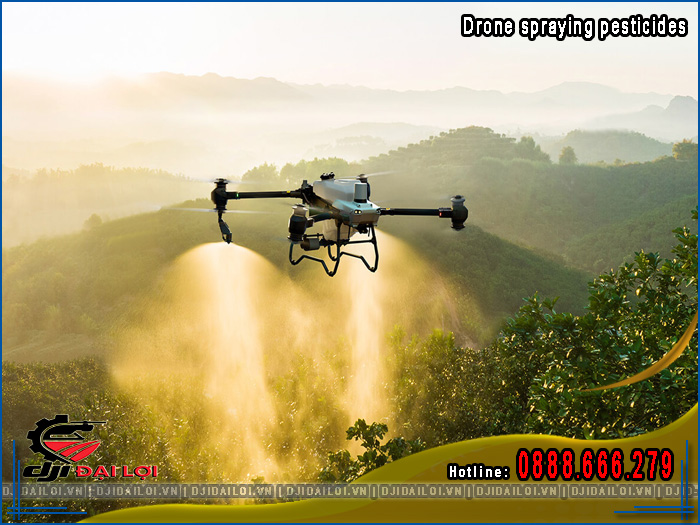
A quiet but noticeable transformation is happening in Vietnamese fields: traditional knapsack sprayers are being replaced by spraying drones. This is no longer a vision of the future but a practical reality in farming hubs like the Central Highlands, Dong Thap, and Binh Thuan.
The real question today is not “Should I use drones?” but rather “Which drone should I choose for optimal cost and performance?” That’s why this top 10 list is sought after by farmers and agricultural service companies alike.
Agricultural spraying drones are unmanned aerial vehicles (UAVs) equipped with centrifugal or misting nozzles to spray pesticides, foliar fertilizers, or biological agents. With GPS navigation, obstacle-avoidance radar, and autonomous flight mapping, drones can:
The market is currently led by DJI (China) with its Agras T20 to T40 series. However, Vietnamese manufacturers like P-Galaxy and MicaDrone are gaining traction with more affordable, terrain-adapted models. Buyers now assess not only performance but also cost, after-sales service, and crop compatibility.
Choosing among various drone models? Begin with these 5 core criteria to find the best fit for your budget and farming needs:
Ranges from 10L to 40L. Larger farms require larger tanks to minimize refill time.
Drone value lies not only in specs or price, but in real-world adaptability - terrain, crop type, and farm scale must all be considered.
|
Model |
Tank Size |
Spray Type |
Flight Time |
Est. Price |
Best For |
|---|---|---|---|---|---|
|
DJI Agras T40 |
40L |
Dual Centrifugal |
~22 mins |
~250M VND |
Large farms, industrial crops |
|
DJI Agras T30 |
30L |
Centrifugal |
~20 mins |
~210M VND |
Rice fields, fruit orchards |
|
DJI Agras T20P |
20L |
Pressure |
~18 mins |
~170M VND |
Small farms, low-canopy trees |
|
P-Galaxy V2 Pro |
20L |
Pressure |
~16 mins |
~140M VND |
Small farms |
|
MicaDrone M6 |
16L |
Pressure + GPS |
~14 mins |
~110M VND |
Terraced fields, highlands |
|
XAG P100 (China) |
25L |
Centrifugal |
~19 mins |
~200M VND |
Mid-sized farms |
|
TTA D30L-8 |
30L |
Centrifugal |
~20 mins |
~190M VND |
Fruits, corn, cassava |
|
Custom (Vietnam) |
12–16L |
Pressure |
~10–13 mins |
~80–100M VND |
Households, small plots |
|
DJI MG-1P RTK |
10L |
Pressure |
~13 mins |
~130M VND |
Narrow plots, hard-to-reach |
|
SkyFarm S20 (VN) |
20L |
Pressure |
~15 mins |
~135M VND |
Flat plains, segmented fields |
According to a 2023 study by Vietnam Academy of Agricultural Sciences (VAAS):
This proves that the right drone pays for itself in 6–10 months - especially for farms over 3 hectares.
Matching your drone to your scenario prevents over- or under-investment - saving cost and maintenance in the long run.
|
Segment |
Example Models |
Price Range |
|---|---|---|
|
Budget |
Custom, MicaDrone M6 |
80M – 110M VND |
|
Mid-range |
P-Galaxy V2 Pro, T20P |
130M – 180M VND |
|
Premium |
DJI T30, T40 |
200M – 260M VND |
Additional costs to consider:
Total investment usually exceeds listed price by 15–20%.
According to Circular 19/2019 from the Ministry of Transport & Vietnam Civil Aviation Authority:
Fines for violations: 10M–40M VND + equipment confiscation for unauthorized flights.
There’s no single “best” spraying drone - only the most suitable one for your farm size, terrain, and budget. DJI T30 and T40 excel in large-scale, outsourced farming, while Vietnamese brands like P-Galaxy and MicaDrone offer excellent value and adaptability.
Need help analyzing your specific crop model? I can assist with tailored recommendations based on your farming scenario.